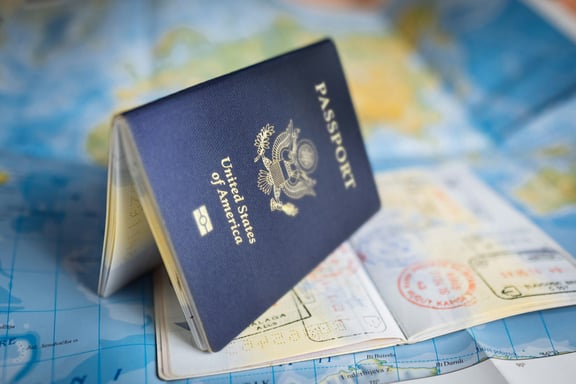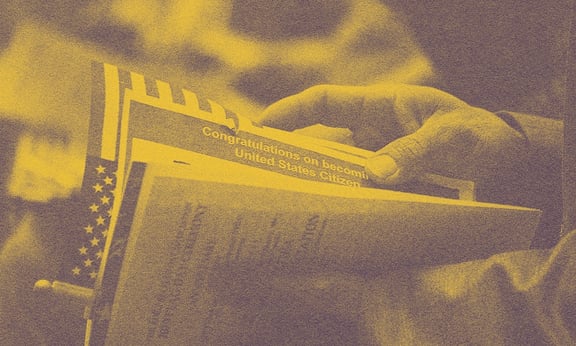The United States is one of the most attractive destinations for global talent. Skilled professionals, researchers, artists, and entrepreneurs from around the world often look for ways to live and work in the U.S. One of the most prestigious options is the EB-1A Green Card.
This category is designed for individuals with extraordinary ability. It offers a direct path to permanent residence without the need for employer sponsorship. In this guide, we will explain what the EB-1A Green Card is, its requirements, the application process, and the advantages it brings.
The EB-1A is an employment-based immigrant visa under the first preference category. It is available for people who can prove they are at the top of their field. Areas include science, business, education, athletics, and the arts.
Unlike other employment-based Green Cards, EB-1A does not require a job offer or labor certification. Applicants can file on their own behalf. This makes it one of the most flexible routes for highly accomplished professionals.
The main goal of this visa is to attract individuals who will bring value and innovation to the U.S. economy, culture, or research community.
Who Qualifies for EB-1A?
To qualify, applicants must show that they have a level of expertise well above the average. U.S. Citizenship and Immigration Services (USCIS) sets clear criteria. An applicant must either provide evidence of a major international award (such as a Nobel Prize or Olympic medal) or meet at least three of ten criteria outlined by USCIS.
This structure allows flexibility. Not everyone will have a world-famous award, but many can still qualify by showing a strong record of achievements.
EB-1A Criteria
USCIS has ten criteria that demonstrate extraordinary ability. Meeting at least three is required. Below is an overview:
- Awards: Evidence of lesser nationally or internationally recognized prizes.
- Memberships: Belonging to associations that require outstanding achievement.
- Publications: Media coverage about the applicant’s work or contributions.
- Judging: Participation as a judge of the work of others in the field.
- Original contributions: Evidence of significant and original contributions.
- Scholarly work: Academic articles published in professional journals.
- Artistic exhibitions: Display of work at artistic showcases.
- Leading roles: Serving in a critical role for distinguished organizations.
- High salary: Proof of earning significantly more than peers.
- Commercial success: In the arts, evidence of box office sales or record sales.
Applicants must show that their achievements are sustained and recognized in their field. One-time success is not enough.
Application Process
The EB-1A process has several steps. Each must be completed carefully to avoid delays.
The first step is filing Form I-140, Immigrant Petition for Alien Worker. This form can be filed by the applicant without an employer. Supporting documents must be included. These documents show evidence of meeting the criteria, along with a detailed explanation of why the applicant qualifies.
If the applicant is in the U.S., they may also file Form I-485, Application to Register Permanent Residence or Adjust Status, once the priority date is current. This step is known as adjustment of status. It allows the applicant to remain in the U.S. while the Green Card is processed.
If the applicant is outside the U.S., they will go through consular processing at a U.S. embassy or consulate. This involves an interview and document review before the Green Card is granted.
Premium processing is available for the I-140 petition. This means USCIS will review the case within 15 calendar days. While it does not guarantee approval, it shortens waiting times.
Documentation Required
A strong EB-1A application is built on solid evidence. The type of documents included can vary depending on the applicant’s field of expertise, but there are several categories of proof that are commonly used to support a petition.
One of the most persuasive pieces of evidence is proof of awards or recognition. These may include national or international prizes that highlight the applicant’s achievements and demonstrate their standing within the field. Membership certificates from professional organizations can also strengthen the case, especially if such memberships are limited to individuals with notable accomplishments.
Media coverage plays an important role as well. Articles in newspapers, journals, or other outlets that discuss the applicant’s work help to demonstrate both impact and public recognition. Similarly, copies of published research papers or artistic works show the applicant’s contributions in a more direct form and provide tangible examples of their influence.
Evidence of service as a judge in competitions, panels, or peer review activities can further support an application by showing that others in the field rely on the applicant’s expertise. Letters from respected experts are also valuable, particularly when they clearly describe the applicant’s influence and contributions rather than offering only general praise.
Employment records may also be submitted to demonstrate leadership roles within distinguished organizations. In some cases, salary records or contracts that prove exceptionally high earnings compared to peers are helpful in showing the applicant’s elevated position in the industry.
All documents should be presented in a clear and organized manner. If they are in a language other than English, certified translations must be provided. Strong recommendation letters are especially important because they add credibility and context to the documentary evidence, highlighting the applicant’s influence and reputation in ways that numbers and statistics alone cannot fully convey.

Advantages
The EB-1A offers several advantages compared to other immigrant visa categories.
One major benefit is that it does not require employer sponsorship. Many professionals prefer this independence. Applicants can take control of their own immigration path.
Another benefit is that it avoids the lengthy labor certification (PERM) process. This significantly reduces waiting times. In many cases, EB-1A applications are processed faster than EB-2 or EB-3 petitions.
Family members also benefit. Spouses and children under 21 can receive permanent residence through the same petition. This allows the entire family to live, work, and study in the U.S.
Finally, the EB-1A is a strong option for those who want flexibility. Once granted, Green Card holders are free to work for any employer, start their own company, or even not work at all.
Challenges and Common Mistakes
Although the EB-1A offers many benefits, approval is not easy. USCIS applies strict scrutiny. Many applicants underestimate the level of evidence required.
A common mistake is providing too few documents. Applicants sometimes assume one award or one article will be enough. In reality, multiple sources of proof strengthen the case.
Another challenge is vague recommendation letters. Letters must be specific, explain the applicant’s role, and highlight measurable contributions. General praise without evidence carries little weight.
Timing also matters. Some applicants apply too early in their careers. Without a consistent record of recognition, approval chances are low.
Once the EB-1A is approved and permanent residence granted, the focus shifts to life in the U.S. Green Card holders must maintain residence by living in the U.S. most of the time. Long absences may cause problems.
Green Card holders also have responsibilities. They must pay taxes on worldwide income and keep records up to date. After five years of permanent residence, they may be eligible to apply for U.S. citizenship.
For many, EB-1A approval is just the beginning. It opens doors to new opportunities in research, business, or creative industries. Maintaining strong professional activity helps ensure long-term success.
The EB-1A is ideal for individuals with consistent achievements and recognition. If you have awards, publications, leadership roles, or high earnings in your field, this category may fit.
However, not every talented professional qualifies. The standard is high. Applicants should review their profile honestly and seek advice before applying.
An experienced immigration attorney can evaluate whether your accomplishments meet USCIS standards. They can also help organize evidence and avoid errors in the petition.
The EB-1A Green Card is one of the most valuable immigration options for global talent. It provides independence, speed, and opportunities for long-term residence in the U.S.
Applicants must prove extraordinary ability through detailed documentation and sustained achievements. While the process is demanding, the rewards are significant.
If you believe your career meets the EB-1A standard, planning early and preparing strong evidence is key. With the right approach, this visa can be your path to permanent residence and new opportunities in the United States.
Categories










